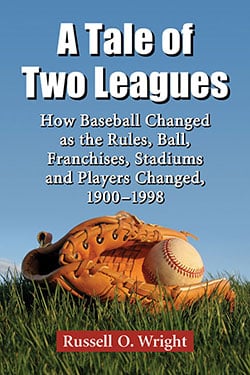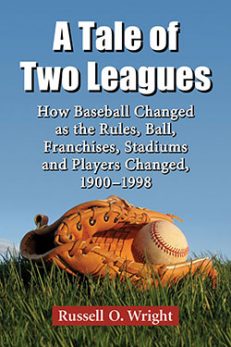A Tale of Two Leagues
How Baseball Changed as the Rules, Ball, Franchises, Stadiums and Players Changed, 1900–1998
$29.95
In stock
About the Book
With the advent of interleague play and the realignment resulting from both the Milwaukee Brewers’ jump from the American League to the National League and the creation of Central divisions, many baseball fans cried foul, claiming that their beloved game was being governed by infidels who cared nothing for tradition. These exasperated purists complained that realignment would mean the loss of existing rivalries, that interleague play would cheapen the thrill of the World Series, and that each move would contribute to the loss of statistical continuity. But change, even radical change, is nothing new to baseball.
Arguing that self-alteration is perhaps the national pastime’s truest tradition, this book shows that it is customary for management to change not only the rules, but the ball, the franchises, and the stadiums. The author considers the key rule changes, franchise moves, ball modifications, and variations in the player pool, and traces the effects each of these had on the game’s statistics.
About the Author(s)
Bibliographic Details
Russell O. Wright
Format: softcover (6 x 9)
Pages: 224
Bibliographic Info: 80 diagrams, 11 tables, chronologies, index
Copyright Date: 2014 [1999]
pISBN: 978-0-7864-9374-6
Imprint: McFarland
Table of Contents
Table of Contents
Acknowledgments v
List of Figures ix
List of Chronologies and Tables xii
Preface 1
Introduction 3
Part I: The Chronologies 7
Development of the Rules, Ball, and Franchises 8
Stadiums and Yearly Changes 15
Part II: Offensive Measures 21
Runs 22
Batting Average 42
Home Runs 62
Stolen Bases 82
Part III: Defensive Measures 103
Strikeouts 104
Walks 124
Errors 144
Double Plays 164
Part IV: Leaders and Records 185
Offensive and Defensive Leaders 186
Records and the Designated Hitter 204
Index 209
Book Reviews & Awards
“[an] interesting book”—Choice; “Wright catalogues the shifting tides of a game many otherwise believe is much the same as it was a hundred years ago”—USA Today Sports Weekly; “liberal use of charts, chronologies and lists”—Sports Collectors Digest; “highly recommended”—Midwest Book Review.





